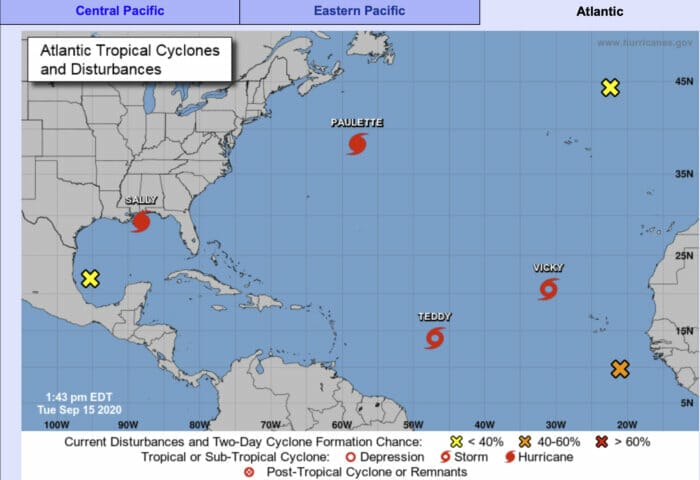
In all my years of living and voyaging in hurricane-vulnerable places, I have never seen anything like the graphic above.
Anyway, it looks like Teddy might come and visit us here in Nova Scotia early next week, and even if he doesn’t I can’t believe we will get through this season without a visitation from one of his siblings, so Phyllis and I have quite a bit of work to do over the next few days securing Morgan’s Cloud, our row boat named Fred, and Basecamp, which will keep me away from my writing desk.
Usually we have several articles in the hopper, but we have to confess that we have been doing a lot more playing and sailing on Morgan’s Cloud than writing, so we are taking a week or so off to get caught up, although I will still be available in the comments.
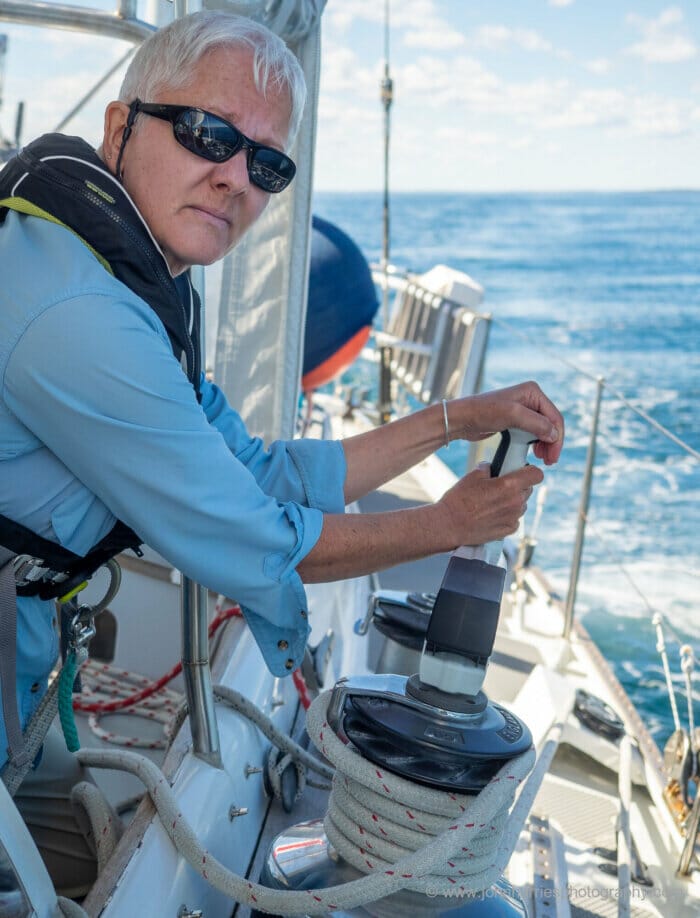
After that, we will be back with an in-depth review of the eWincher electric winch handle.
Below are a few snaps I took over the summer.
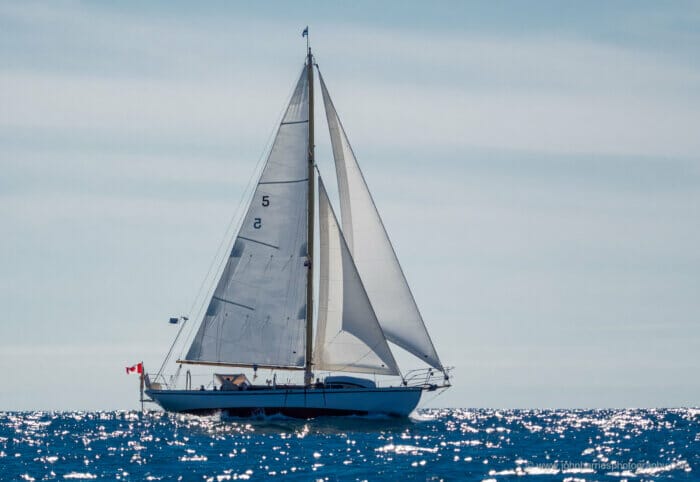
In this case Wilson (he of the strange varnish fetish) and Thelma on their beautiful self-built Atkin designed cutter.


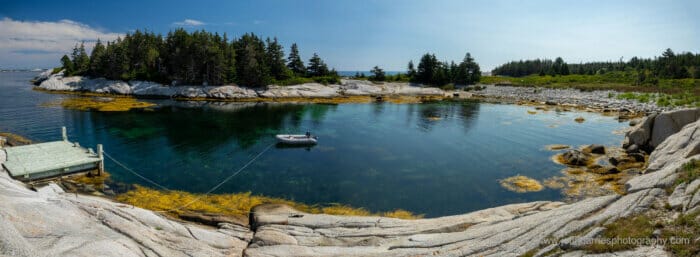
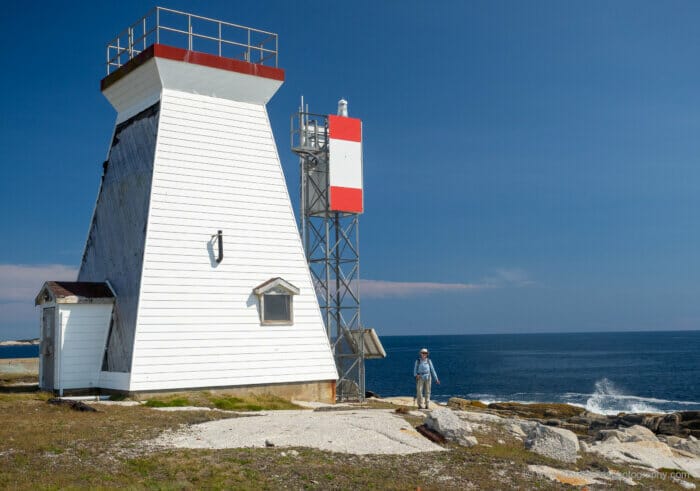

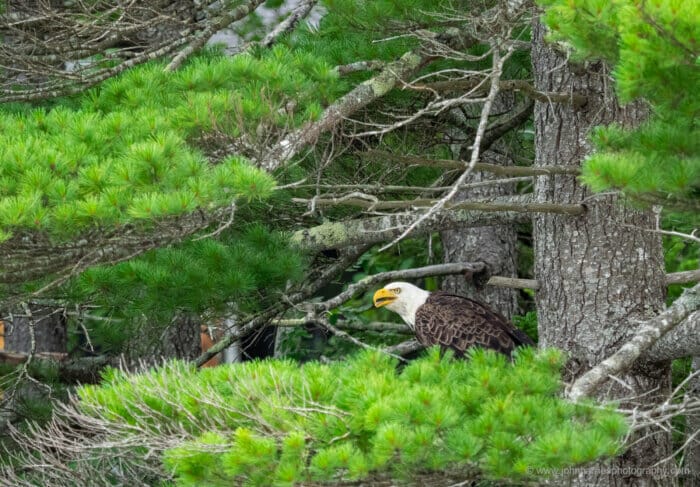
*Inspired by the premier of Nova Scotia, Stephen McNeil. By the way, it worked, in Nova Scotia cases have been zero or close to it for most of the summer, another reason we are thankful.

I had a feeling Teddy might come this way. We’re out of isolation Tuesday at Port Hawkesbury and and are heading to Halifax as soon as weather permits. The season grows short.
At what point is pleading with fellow Americans to vote out climate-deniers no longer politics but rather good seamanship in the form of long term risk management? Not that I would do such a thing of course.
Good to hear you are enjoying some playing and sailing…
It is always nice to see a picture of our boat.Thanks John!
The little green boat is an L. Francis Herreshoff design owned by my friend Paul Baskett. We will be “racing” against each other this Saturday in Lunenburg along with a fleet of other wooden boats, a very casual affair, just for the fun of it with no handicaps.
We are paying close attention to Hurricane Teddy. The European model shows a direct hit on southwestern Nova Scotia this Tuesday at 960 millibars. The GFS has it going further offshore but either way it looks like the real deal. Monday will be spent stripping the boat down to her bones, bringing an excellent sailing season to an early close.
We started this year with ambitious plans for long distance sailing in foreign parts but, with Covid and border closures, spent the summer ranging up and down the Nova Scotia coast with various combinations of grandchildren as crew. It was the sort of summer that most people would give their eye teeth for, so we have no complaints at all.
Wilson
We hope it veers a little more offshore. NE-E I think I can handle if I rotate the boat in its dock to take it bow on, but S-SW will, in the words of a member here “take these docks apart like it did with Dorian last year”. A professional skipper acquaintance turned down a gig out of Yarmouth with the observation that the conditions were identical to those of 1991’s “Perfect Storm”. We can’t easily move as we are under self-isolation, although I might try getting to a wall on the wharf if the choice is to lose the boat on a crumbling dock. This cruising life is never boring, I’ll give you that.
Hi Marc,
I would beg for permission to move. After all, you don’t have to get off the boat. There are good anchorages in behind Isle Madame. Another option, if you prefer to be alongside so the crew can get off in an emergency, is along the St. Peters canal wall inside the lock gates. If it were me, I would be doing everything possible to get the other side of the St Peters lock gates and doing that today.
I had a discussion with a professional skipper here and a former yachtie. He suggested a number of techniques (tying off to the dock chains, laying an anchor out on a long rode ahead of time if the dock gives) that we hope will work. St. Peter’s Marina is turfing out their boats, so the canal will be full like it was with Dorian last year, when a lot of boats were badly damaged. We’ve been invited ashore for the worst of it. I will review in light of the storm track. Thanks for the advice, but jammed into a canal with a lot of other boats attempting to raft sounds worse than where we are now. I may change my mind tomorrow, mind you!
Hi Marc,
That may be true, but that does not change that the lakes are the best place to be and far less exposed than where you are now. There are enough good hurricane anchorages there to accommodate 10 times the boats in the area. Each to their own, but my preferred option is always the anchor in a sheltered cove.
I only pointed out the canal because it’s an option that lets you get off the boat easily and even with other boats around it’s also safer option than your current location since the gates protect you from surge and swell.
As to “reviewing in the light of the storm track” I would not do that. Based on my experience of dealing with tropical nasties for over 20 years on this coast I can tell you that substantial changes in the track from forecast during the last 12, or even 6, hours before they come ashore are the rule, not the exception. The reason is that hurricanes here are in the process of transitioning to extra tropical when they hit us, so forecasting is much less precise than it is further south. So planning based on the forecast track is a risky business. Better to be in a situation that is safe regardless of wind direction.
A real examples : https://www.morganscloud.com/2010/09/01/hurricane-forecasts/
https://www.morganscloud.com/2011/09/29/lessons-in-hurricane-forecasting/
i appreciate the comments and advice, John. At present, the wind is supposed to move NE-SE here Tuesday into Wednesday. That’s both “blowing us on” and is protected to varying degrees by land. Where we are is, I would say, semi-sheltered. It is blowing 25-30 knots W here and there are whitecaps in the strait, but it is barely moving here.
The same wind at the south end of Bras D’or Lake of NE-ESE blows onto a lee shore. If the marina were to stay open, however, I would have chosen that. Had I ever sailed in the area, too, I would be more ready to stay aboard on the anchor (a 30 kg. SPADE, by the way).
But I feel the priority has to be my family’s safety rather than the preservation of the boat, if it comes to that, which I sincerely hope it will not. We will be off the boat midday Tuesday and have been given permission to shelter in the clubhouse. Our prep in the next 60 hours or so will be to reduce windage, get the anchor out into the small bay to the east, deploy a logical set of lines, and get some gear and possessions off the boat. We’ve even been invited to dinner two blocks away, which will beat staring at our boat at the height of this very early Wednesday morning.
Should our boat come through this in one piece, I would be happy to report our results and any positive data points I can contribute. Thank you for the constructive advice and counsel.
Hi Marc,
It’s swell that’s the potential problem in your situation, not wind. Right now the swell and wave models show 5-6 meters swell directed right into the Straits of Canso on Tuesday. Will that happen? Who knows, but my first rule of hurricane preparation (after preservation of life) is not to be in a place where there is any swell risk, particularly when there are so many good alternatives so close by.
So noted, John. Thanks for that added comment. I will mention it to people here who actually see all conditions and see what they say.
Hi Wilson,
Thanks for the fill on the green boat. I should have recognized her since you pointed her out to me during a walk around Lunenburg last year.
Hi John,
Yes, the shear number of storms this year is just crazy. I thought for sure you were going to show a graphic of when there were 5 storms spinning but regardless, it is an alarming graphic. We had a pretty mild TS already this year and another near miss while we were out cruising. I don’t envy you guys in Nova Scotia who seem to attract the storms more than us.
I am glad to hear you guys have been out enjoying cruising. We did get our normal cruises in with adjusted itineraries and the need to test prior to certain destinations but there were not a lot of cruising boats out although small powerboats are everywhere. Another difference is that we have seen way more Eagles than ever before and many fewer shearwaters, gannets and other seabirds, go figure.
Eric
Hi Eric,
Yes, we seem to be getting at least one good hit every year these days. The good news is that our inlet is totally closed off from the sea with a sharp turn that keeps the swell out, and we have a massive mooring. Still, these things are always anxiety inducing.
I’m not sure I’ll ever stop being nervous about leaving a boat unattended in any kind of non-negligible weather. Our marina is very well protected from waves from any direction, and from wind in any direction other than due east (the rarest wind). But a few decades of trailer boating teaches you that a boat’s natural and proper home is on a trailer, on a 100 ton concrete slab, inside a steel Quonset hut, and that’s a very hard thought pattern to get away from.
Often, when I see other people’s moorings and ground tackle, I have to suppress this reaction of “jeeperz, that won’t cut it.” Someone will tie a chain around a rusty engine block and call it a mooring – dude, I can drag that thing by hand, and you’re trusting a yacht to it? Or asking me to pay you for the privilege of tying my yacht to it?
Hi Matt,
I definitely breathe a sigh of relief each year when our boat comes out of the water but at the same time, it is not totally safe on land either. Around here, we start to get big fall nor’easters about the time we haul so that is one of the reasons why we don’t wait a few weeks longer.
I find mooring standards and what people do when there are not any to be an appalling mishmash of stuff that makes little to no sense and I suspect that you would agree as an engineer (I think you mentioned being on a dock so may not have had to wade through this mess). When sizing our tackle, I looked at historical weather data for our area to get some idea of what the worst storms recorded have been, how often they occur, etc. Our tackle is based on a specific set of conditions that we feel we have a good chance of seeing in the amount of time we own the boat. We ended up with a 1000lb Dor-Mor anchor which if you believe the manufacturer’s claims (they have too few data points so I only give them credit for half of what they claim) has more than 3X the predicted holding power of the 6000lb concrete block the town requires which is still 2X more than 2 towns over with similar exposure which only requires a 3000lb concrete block. Another town around here would let us use a 1000lb Dor-Mor or a 2000lb concrete block representing an order of magnitude difference in holding power. The best requirements seem to give you a fighting chance in weather that we get only a few times a century but the worst ones are operating with virtually no safety factor in summer thunderstorms and will find the entire field up on the beach the next time there is a real hurricane. I have been watching one of the biggest mooring fields around here for the last 10 years or so and the number of boats that end up on the beach each year has averaged an almost shocking 1% (pendant chafe is the #1 cause but dragging is #2). Chain is also interesting, we have 30′ of 1-1/4″ and 30′ of 5/8″ while the town we are in would allow 3/4″ and 1/2″ and others around here allow 5/8″ and 1/2″. Almost no one corrects for water depth which means that the chain in shallow water can store less energy and ends up at shorter scope with storm surge. Interestingly, figuring out requirements for chain energy was probably the hardest part of this whole thing, especially as we do have some exposure in 1 direction which is why we have a setup that is 3X heavier than required.
What worries me most is how many marinas and towns reacted to a storm last fall that was strong but not unseasonal by claiming that it was not forecast and/or extreme conditions both of which are simply not true. Thankfully, there were a few local towns which took it as a good opportunity to review their requirements but most seem to not take a quantitative approach and I doubt that many have the stomach to require anything more heavy duty or smarter in design.
Eric
Hi Eric,
Wow, that’s a sobering assessment and certainly agrees with what I have seen. We have the same lackadaisical attitude, maybe worse, to mooring engineering here: https://www.morganscloud.com/2007/04/01/moorings-vs-anchoring/
What is the maximum fetch where your boat is moored? I’m also often amazed by the how exposed popular mooring fields are in New England. Padanaram and Marion come to mind particularly. I often joke that some of these places are “in the lee of Bermuda”.
We are very lucky in that regard here in Nova Scotia since we just don’t have the same pressure of boat owning population forcing people to moor in exposed places.
Hi John,
Fetch at our mooring falls into the its complicated category. We are at the south end of a bay that is about a mile across with a big sandbar in the middle. The section of sandbar about 300′ north of us only covers by about 3′ at high water so at low tide, there is extremely little fetch and at high tide, it is more. The entrance to the bay is due north of us and it has slowly been widening over the years from quite narrow to something that could let waves in and you do literally look at the southern coast of Maine. There is a pretty nasty set of sandbars that protect the entrance so while you don’t see land at high tide, most of the energy is out of the waves well before they get anywhere near us. Of course, the issue is storm surge and if we had 5′ of surge on top of a big tide, in theory we could get 5′ waves at our mooring which should be survivable but not good. In practice, I have never seen much bigger than 2′ and that was in a pretty bad winter nor’easter. Part of the reason for this undoubtedly lies in the fact that nor’easters and many tropical systems go SE, E, NE while the rest tend to go SE, S, SW and sustained strong north is actually a pretty rare occurrence. We sometimes keep our boat in Salem but that has a few miles of fetch in NE and there are 1000 moorings in there with all sorts of issues encouraging breaking free and dragging. Therefore, we spend all real weather on our other mooring where there is no one to the north of us and a handful of boats to the south of us that get pulled before any real weather. Our north exposure is definitely not perfect so we have a pretty heavy duty mooring but I feel that it is our best option.
Unfortunately your description of being in the “lee of Bermuda” is not that far off for some of the mooring fields around here and it is only getting worse since you were last here. In some senses, it makes me more confident though as I have seen multiple times where boats on moorings survive 6-8′ waves which means that if you can limit yourself to much less, it should be survivable if you are smart. We are actually looking for a different place to keep the boat so we are not tide restricted but many of the mooring fields around here scare me too much or we would need to join a club where we don’t know anybody to sponsor us. We can keep our current mooring for storms but I don’t consider it a solution if I feel I need to move to it every time there is a gale so any new mooring we go to must be pretty well protected with decent mooring standards for surrounding boats.
Eric
Hi Eric,
As you say, complicated, but it sounds to me like you are in good shape and probably better set up than 95% of the boats in the area.
Just getting the first gusts from Teddy as I write.
Hi John,
Good luck with the storm, looks like a long night ahead for a lot of people in your area. This is one seriously big storm at this point, the growth in diameter over the last 24 hours is pretty incredible. Thankfully for us, we are outside the wind field but not by a whole lot. The surf is starting to really kick up now here.
Eric
Hi Eric,
Looks like we dodged that one, so far not more than gale force. The joys of being in the safe semicircle. Also, we got lucky with the cold water churned up from Paulette taking the sting out of Teddy. Could have been a very different story without that.
Oh wonderful pictures – thanks for posting! Remembering fondly the days sailing along those shores and wonderful anchorages… Your photos bring it all back, much appreciated.
The picture of the 5 storms/storms-to-be is certainly sobering. Had seen that early next week might be spicy for you guys, wishing you both, MC, Fred, base camp and the loons in your inlet all the very best, Cheers, Lou.
Hi Lou,
Great to hear from you and glad you liked the shots.
Todo pacífico oriental tranquilo
We came through OK. Thanks for all the good advice. Headed to Halifax on Sunday if this weather holds.
Hi Marc,
Very glad to hear it, I was sweating a bit when it moved east.
I won’t pretend I wasn’t a touch damp myself when it broke 50 knots here around noon-1 PM, but the “Dyneema core lines around the dock and back” seemed to hold the boat, and the breakwaters here, while modest, slowed down the waves enough. An interesting point we noted, having nothing to do but look out the window from the YC’s second floor here for several hours, fretting, was that there was very little in the way of surge, even at high tide. But there was a hatful of wind and horizontal rain. Our gunwales have rarely been so scoured!
A final data point was that, on the advice of a professional skipper here, we had anchored out in the harbour and backed onto the dock to give the boat a shot had the dock crumbled or our dock lines parted. On your advice, we bought a 30 kilo SPADE. Good grief, yesterday morning when we brought the anchor up (first morning with very light air), we brought up half the seabed with it. We are starting to thing a good length of Dyneema lashed to the crown and ending at the anchoring float might help us to extract the SPADE “backwards” at 1:1 scope to get the job done a little quicker. While one can’t fault an anchor for burying itself quite so effectively, it’s a dramatic testament to its mode of action that it does so with a ridiculously long scope (50 metres of chain and 90 metres of rope rode with, apart from the initial set, no further pull as we were on a dock!)
Hi Marc,
Thanks for the update. Our to and fro has inspired me to start thinking about an article or two on how to pick a place and prepare to ride out strong gale force 9 (which is the most we had, barely) up to cat 2 hurricane force based on my some 30 years of doing that on the coasts of the North Atlantic (both sides) from Greenland south to the Caribbean, so thanks for the inspiration too.
I would enjoy such an article, especially with sidebars on bridles vs. snubbers and the role of the chain hook. When putting on rope rode onto our usual all-chain rode, I lashed the chain to a bow bollard with a rolling hitch and no tension on the chain to remove it from the chain stopper, and reversed that for retrieval. No issues.
Thanks also for recommending the SPADE, which has already paid for itself in peace of mind, and for your sage advice I didn’t take. Doesn’t mean I didn’t think about it a great deal. Yes, I think I heard about force 9 (when the shriek turns into a groan) here and the air was thick with spray…but we were sheltered largely by land and a very short fetch here in the ship harbour.
May I suggest another article about best techniques for stubborn hook extraction? And I used to poo-poo foredeck wash hoses, but now I want a pressure washer up there. More plumbing in our future. Bradison will have a better Christmas, I suspect, once we roll in next week.